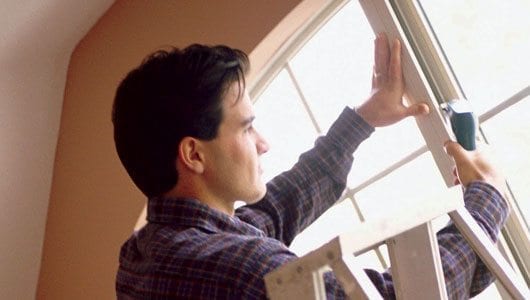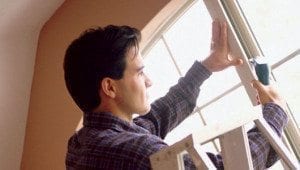
Replace windows to improve energy efficiency
 In older homes, windows are often a key culprit of heat loss in winter and a source of sweltering temperatures in summer, accounting for 25 percent to 50 percent of the energy used to heat and cool homes. Here’s how to replace windows to improve energy efficiency.
In older homes, windows are often a key culprit of heat loss in winter and a source of sweltering temperatures in summer, accounting for 25 percent to 50 percent of the energy used to heat and cool homes. Here’s how to replace windows to improve energy efficiency.
Start with design
Consider window sizes, types, placement and properties an integral part of the whole house design. Follow these replacement window installation tips and try to:
- Reduce number of windows on east and west sides to avoid summer heat gain.
- Shade windows with overhangs, awnings or vegetation.
- Limit the use of skylights, which add more heat in the summer and let it escape in the winter.
Select wisely
If you want to replace windows to improve energy efficiency, use the guidelines from the National Fenestration Rating Council (NFRC) and the Energy Star program to choose windows that offer improved performance.
Install correctly
Windows are only energy efficient if air doesn’t leak in around them. When installing windows, spray low-expansion foam between the window frame and wall framing, or seal around the exterior of windows with air-barrier tape or caulk when using air barriers or foam sheathing.
Know the numbers
The NFRC certifies windows with three measured criteria corresponding to heat loss and gain methods: U-factor, solar heat gain coefficient (SHGC) and air leakage. NFRC also labels the visible transmittance (VT) of the window. Energy Star is a federal initiative to label energy-efficient products. All Energy Star windows must carry the NFRC certification label. Here’s how to interpret the criteria:
- The U-factor measures the rate at which a window conducts nonsolar heat flow. Under the NFRC ratings, the U-factor represents the performance of the entire window, including the frame and spacer materials, plus the effects of low-E glazing, gas fills, tinting and films. A window with a lower U-factor is more energy-efficient than one with a higher U-factor. Window U-factors generally range from 0.2 to 1.2.
- The SHGC is the fraction of solar radiation admitted through a window, transmitted directly and/or absorbed by a window assembly, and then released as heat inside the home. The lower a window’s SHGC, the less solar heat it transmits and the greater its shading ability. A window with a high SHGC is more effective at collecting solar heat gain during the winter. A window with a low SHGC is more effective at reducing cooling loads during the summer by blocking heat gained from the sun. SHGCs range between 0 and 1.
- Air leakage is a measure of the rate of air infiltration around a window in the presence of a specific pressure difference across the window. The air leakage is expressed in units of cubic feet per minute per square foot of frame area. A window with a low air-leakage rating is tighter than a window with a high air-leakage rating. Air leakages are usually less than 1.
- VT is the fraction of the visible spectrum of sunlight weighted by the sensitivity of the human eye that is transmitted through the window’s glazing. A window with a higher VT transmits more visible light. VT is expressed as a number between 0 and 1.
Remodeling options
Remove old window entirely. All options for glazing layers and type, spacer type, gas fill and frame and sash material are available when using new windows. Properly air seal around the windows.
Leave existing frame. Options include setting new windows into the frame of the old window or sash-only cord replacement.
The glazing used in replacement sashes is available with low-E coating. When selecting replacement sashes, as with new windows, give consideration to the number of glazing layers and type, spacer type, gas fill, and frame and sash material.
Leave existing windows, including storm windows (low-E coating available), plastic films and weatherstripping.
Preferred contractor services
American Craftsman Window and Door manufactures high-performance vinyl-clad windows that are Energy Star rated in all four U.S. climate zones. The company also provides special incentives for preferred contractor customers at 1,500 store locations, including:
- A dedicated help line to answer questions about product specs and installation. Call (888) 504-0005.
- A 10 percent discount applied to all special orders for preferred contractors.
- In-store stocking determined by local area housing type, so sizes and quantities of windows are available when needed.
Factors to consider when considering to replace windows to improve energy efficiency: frame type, glazing, shading, orientation, total window area, total insulating value and installation methods.

